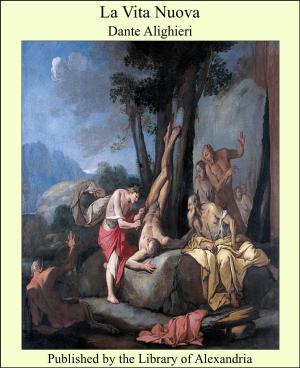The Complete Opera Book: The Stories of the Operas together with 400 of the Leading Airs and Motives in Musical Notation
Nonfiction, Religion & Spirituality, New Age, History, Fiction & Literature| Author: | Gustav Kobbé | ISBN: | 9781465542861 |
| Publisher: | Library of Alexandria | Publication: | March 8, 2015 |
| Imprint: | Language: | English |
| Author: | Gustav Kobbé |
| ISBN: | 9781465542861 |
| Publisher: | Library of Alexandria |
| Publication: | March 8, 2015 |
| Imprint: | |
| Language: | English |
Of the three standard schools, the Italian is the most frankly melodious. When at its best, Italian vocal melody ravishes the senses. When not at its best, it merely tickles the ear and offends common sense. "Aïda" was a turning point in Italian music. Before Verdi composed "Aïda," Italian opera, despite its many beauties, was largely a thing of temperament, inspirationally, but often also carelessly set forth. Now, Italian opera composers no longer accept any libretto thrust at them. They think out their scores more carefully; they produce works in which due attention is paid to both vocal and orchestral effect. The older composers still represented in the repertoire are Rossini, Bellini, Donizetti, and Verdi. The last-named, however, also reaches well over into the modern school of Italian opera, whose foremost living exponent is Puccini. Although Rameau (1683-1764), whose "Castor and Pollux" held the stage until supplanted by Gluck's works, was a native of France, French opera had for its founder the Italian, Lully; and one of its chief exponents was the German, Meyerbeer. Two foreigners, therefore, have had a large share in developing the school. It boasts, however, many distinguished natives—Halévy, Auber, Gounod, Bizet, Massenet. In the French school of opera the instrumental support of the voice is far richer and the combination of vocal and instrumental effect more discriminating than in the old school of Italian opera. A first cousin of Italian opera, the French, nevertheless, is more carefully thought out, sometimes even too calculated; but, in general, less florid, and never indifferent to the librettist and the significance of the lines he has written and the situations he has evoked. Massenet is, in the truest sense, the most recent representative of the school of Meyerbeer and Gounod, for Bizet's "Carmen" is unique, and Débussy's "Pelléas et Mélisande" a wholly separate manifestation of French art for the lyric stage. The German school of opera is distinguished by a seriousness of purpose that discards all effort at vocal display for itself alone, and strives, in a score, well-balanced as between voice and orchestra, to express more forcibly than could the spoken work, the drama that has been set to music.
Of the three standard schools, the Italian is the most frankly melodious. When at its best, Italian vocal melody ravishes the senses. When not at its best, it merely tickles the ear and offends common sense. "Aïda" was a turning point in Italian music. Before Verdi composed "Aïda," Italian opera, despite its many beauties, was largely a thing of temperament, inspirationally, but often also carelessly set forth. Now, Italian opera composers no longer accept any libretto thrust at them. They think out their scores more carefully; they produce works in which due attention is paid to both vocal and orchestral effect. The older composers still represented in the repertoire are Rossini, Bellini, Donizetti, and Verdi. The last-named, however, also reaches well over into the modern school of Italian opera, whose foremost living exponent is Puccini. Although Rameau (1683-1764), whose "Castor and Pollux" held the stage until supplanted by Gluck's works, was a native of France, French opera had for its founder the Italian, Lully; and one of its chief exponents was the German, Meyerbeer. Two foreigners, therefore, have had a large share in developing the school. It boasts, however, many distinguished natives—Halévy, Auber, Gounod, Bizet, Massenet. In the French school of opera the instrumental support of the voice is far richer and the combination of vocal and instrumental effect more discriminating than in the old school of Italian opera. A first cousin of Italian opera, the French, nevertheless, is more carefully thought out, sometimes even too calculated; but, in general, less florid, and never indifferent to the librettist and the significance of the lines he has written and the situations he has evoked. Massenet is, in the truest sense, the most recent representative of the school of Meyerbeer and Gounod, for Bizet's "Carmen" is unique, and Débussy's "Pelléas et Mélisande" a wholly separate manifestation of French art for the lyric stage. The German school of opera is distinguished by a seriousness of purpose that discards all effort at vocal display for itself alone, and strives, in a score, well-balanced as between voice and orchestra, to express more forcibly than could the spoken work, the drama that has been set to music.















